| Place | Europe: France, Picardie, Somme, Corbie Albert Area, Corbie |
|---|---|
| Accession Number | RELAWM07570 |
| Collection type | Technology |
| Object type | Aircraft component |
| Physical description | Linen, Paint, Varnish; Cellulose Acetate |
| Maker |
Fokker Aeroplanbau |
| Place made | Germany |
| Date made | 1917 |
| Conflict |
First World War, 1914-1918 |
Painted German cross on Fokker Dr1 fabric : Baron Manfred von Richthofen, Geschwader 1, German Air Service




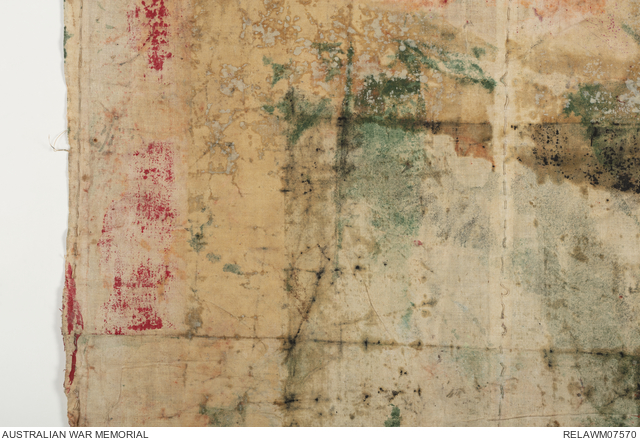






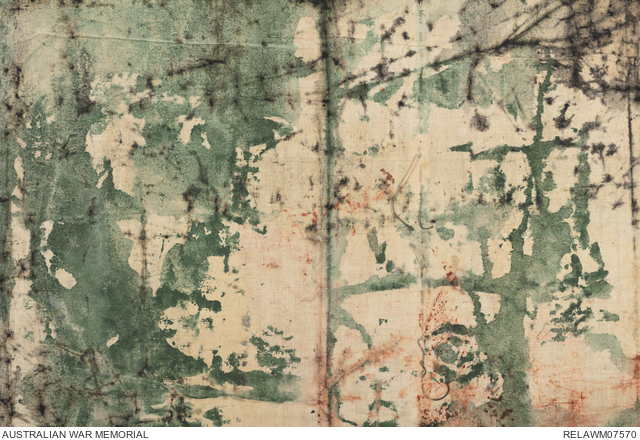








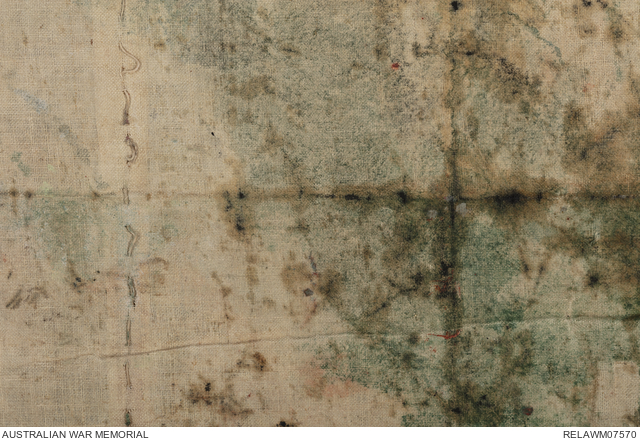


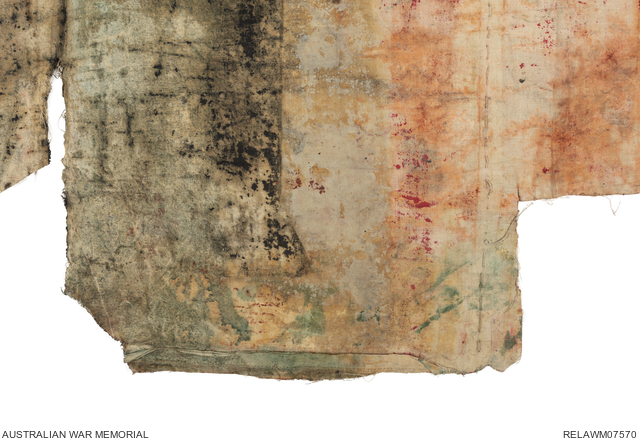








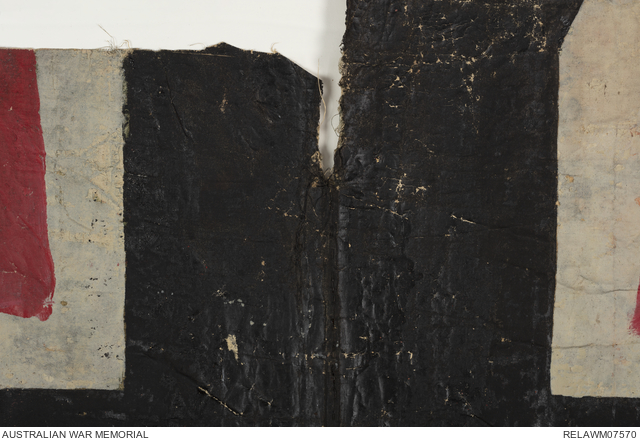



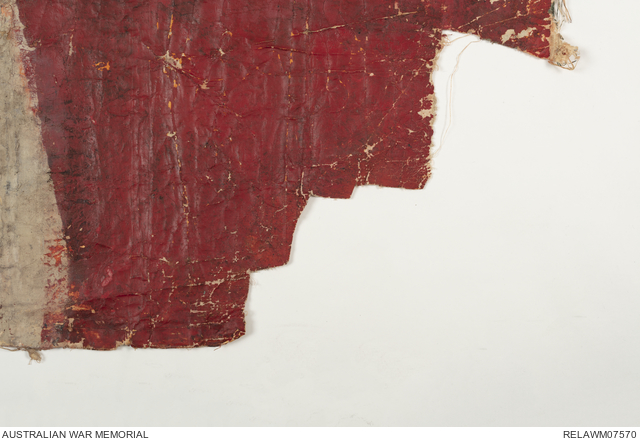


















A rough square of aircraft fabric featuring a black German Balkenkreuz bordered by white, all on a red painted background. The black cross and its white border are unevenly painted and do not match each other. There is evidence of multiple white and black paint coats, as there is with the red paint. The reverse of the fabric shows evidence of black, red and green paint and possibly dope. The fabric has been removed from the aircraft in a rough square shape approximating the Balkenkreuz, but has cut though the lower end of one of the crosses. The approximate centreline of the Balkenkreuz coincides with a double folded sewn seam. This appears to be where the square of fabric has been repeatedly folded and is thus fragile at this point. Most of the paint is crazed or cracked. Thread count 22 threads/cm x 22 threads/cm.
It is clear that the Balkenkreuz has been applied 'in the field' over an existing Cross Pattee. The tips of the latter are clearly visible. This would have been done in early April 1918, when the German Air force transitioned from the Cross Pattee to the Balkankreuz. This is a good example of a palimpsest - an item that has been re-worked or over-written to serve another purpose.
This square of fabric was recovered from von Richthofen's crashed triplane a few minutes after the crash by Lieutenant George M Travers, MC, 49 Battalion. He related his account of events for Smith's Weekly on August 25 1934, with the narrative commencing from the point where he was lying on Corbie Hill with a pair of binoculars, watching two planes approach from 2-3 miles (about 5 kilometres) away. One was Lt Wilfred May's Sopwith Camel - the other Richthofen's Fokker Triplane.
"My runner, Private Webber, was with me and I had the two planes in view, coming straight towards us, for 2 or 3 miles. They came straight along the line of the Somme to Corbie Hill. Richthofen was very close to the tail of the other plane and firing at it when he was within a few hundred yards of us.
"Just then a machine gun down below us fired three of four bursts and Richthofen's plane seemed to turn on its side, right itself again, then swerve sharply to the right and swoop gradually to the ground, landing about half a mile away.
"The first three to reach the plane were Captain Cruickshank, Staff Captain of the 11th Brigade, my runner and myself. Cruickshank took charge of things and carried a few papers and a gold watch back to Brigade headquarters. Richthofen was identified by an inscription on the watch.
"I don't suppose anyone can be 'shot at dawn' after fifteen years or more for admitting to going souvenir-hunting. I got one of the big black crosses, about 4 ft by 4 ft, painted on the red paint which was over the fabric of his plane. This cross I wrapped up and put in my valise.
"A few days after, at Villers-Bretonneux, I was severely wounded and eventually arrived at Wandsworth Hospital, England. A Sergeant from the Records Section in London came down to see me and said he had been sent by Major Treloar, OC Records. He said they had heard that I had Richthofen's cross and asked if I would let them have it for the Australian War Museum. Eventually I gave into them."
Smith's Weekly also tracked down and interviewed Edward Burrow, a fellow member of Travers' company, who corroborated Travers' account:
"I was also a witness of the affair and went over to the place where the plane was lying immediately after it had struck the ground. Richthofen was then dead.
"There was such a scramble for souvenirs that, although only minutes had elapsed from the time he struck the ground till I got there, someone had relieved him of his boots."
Attempts by Australian War Memorial staff to contact Travers in October 1934 to ascertain which wing he had cut the cross from were unsuccessful - a Memorial clerk noting "apparently useless to hope for a reply".
Quoted in AWM93 - 12/11/5350 "G.M. Travers Esq, MC, Balranald, NSW."